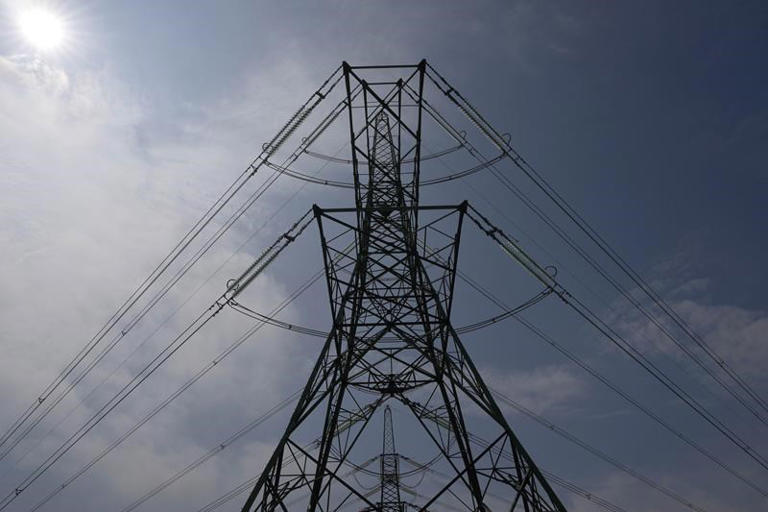Alberta
Federal electricity regulations threaten Albertans with high costs and power outages

Alberta responds to dangerous federal electricity regulations
Alberta has submitted detailed analysis showing why proposed federal regulations will threaten the province’s electricity grid.
Alberta is rapidly reducing emissions and targeting a carbon-neutral grid by 2050. Electricity emissions have declined by 53 per cent since 2005 and the province will have phased-out all coal generation by early 2024.
However, in August, the federal government released its draft Clean Electricity Regulations, which propose rigid rules to try and achieve net-zero electricity by 2035.
Based on expert analysis and industry consultations, Alberta’s government has submitted a detailed response outlining the technical problems with these regulations. The province’s analysis found that these regulations are unrealistic, ineffective and could compromise grid reliability to an unacceptable degree, resulting in the very real risk that Albertans will not have access to an essential service, like power, when they need it.
“These regulations are irresponsible and reckless, setting unrealistic targets and even banking on technologies that don’t exist. They will result in Albertans shouldering an unbearable cost for an electricity system that will no longer deliver the safety, reliability and affordability upon which our lives depend. We will not permit these dangerous and unconstitutional regulations to be imposed upon our province.”
“The standards and enforcement that Ottawa is proposing would put the safe, reliable and openly competitive market of Alberta’s electricity system at risk, all for targets that aren’t feasible or realistic. We cannot allow the reliability of our electricity to be compromised and risk public safety during the coldest months of the year, when people need the power most. We urge Ottawa to abandon these regulations and work with us on a realistic path that aligns with our own emissions-reduction goals.”
Some of the key problems outlined in Alberta’s technical submission include:
Flawed modelling creates unrealistic targets
The modelling tools used by the federal government lack the capability to properly assess Alberta’s energy-only market, including the province’s large share of cogeneration. The federal tools also use incomplete proxies to evaluate system reliability, leading them to drastically underestimate the negative impacts.
The federal modelling also relies heavily on technologies that are currently not ready to be deployed, assuming that they will soon be easily or quickly available. As a result, the federal modelling offers an unreliable and inaccurate picture of the costs, impacts on reliability and outcomes of these regulations. With better modelling, the federal targets would be unachievable.
Unachievable standards
The regulations propose unachievable emission standards, with limited flexibility and using a rigid approach that will not work. The standard is also based on unproven design specifications that will be very challenging for operators to meet, even under optimal conditions, and potentially impossible given the operational variability that occurs in electricity grids on a daily basis.
Notably, Ottawa’s standard is significantly higher than those proposed in the United States in May. Standards need to be based on actual performance.
Creating a retirement cliff
The proposed regulations set an end of prescribed life of 20 years, despite the typical operating life of natural gas units being closer to 45 years. This will create stranded assets and massive retirement “cliffs,” as large numbers of natural gas facilities go off-line.
Approximately 55 per cent of Alberta’s existing and approved natural gas generation installed capacity would be subject to the federal emissions standard by 2035. The unnecessary retirement of best-in-class natural gas units would have massive negative impacts on Alberta’s electricity system.
A one-size-fits-all approach won’t work
It is clear that the federal government drafted these regulations based largely on the electricity systems of Canada’s three largest provinces, which primarily rely upon hydroelectricity and nuclear energy.
Regional differences must be recognized, including flexibilities for those jurisdictions most negatively affected by the regulations. When Ottawa exempted home heating oil from the carbon tax, they recognized the need for this flexibility. Alberta and all provinces deserve the same consideration.
Flawed understanding of natural gas
Alberta currently relies on natural gas for more than 70 per cent of its generation. Alberta’s grid reliability is maintained through natural gas generation to backup and balance intermittent sources of power such as wind and solar. Considering the seasonality of renewable resources, Alberta anticipates the need for efficient high-capacity abated natural gas units for decades to come.
The regulations are so rigid and strict that they will effectively make it economically unviable for companies to build and operate natural gas facilities, including abating emissions through carbon capture, utilization and storage (CCUS).
Inflexible and punitive compliance options
The draft regulations are unnecessarily punitive with inflexible compliance options. As written, generators must not emit or they could face criminal penalties under the Canadian Environmental Protection Act, which includes a threat of incarceration. The regulations also increase red tape, increase costs, and offer very little flexibility for industry.
Limiting new technologies
The proposed federal electricity regulations will limit the adoption of important new technologies like hydrogen and CCUS by setting unproven and unrealistic performance standards for facilities. This imposes high costs, introduces investor risk, and creates challenges such as older facilities not being able to upgrade or retrofit new technologies. The result will be added costs and grid reliability risks.
Risks to reliability and safety
Alberta requires reliable electricity power in periods when intermittent sources are not generating. In December 2022, the 5,000 megawatts of installed renewable capacity generated as little as 187 megawatts of energy at one point during a period of cold weather with little wind or solar generation. Natural gas was needed to keep the province from experiencing blackouts.
The proposed allowable peaking provisions – needed to ensure that power is available at any time, under any weather conditions – will result in Alberta not having enough power available when needed most. This is dangerous and irresponsible. The proposed low annual-run-hour limit and emissions restrictions do not enable natural gas assets to respond when needed to increasing demands and the variability of intermittent generation.
A ridiculous approach to emergencies
The proposed treatment of emergencies is unacceptable. It is untenable for the federal government to require post-emergency sign-off by a federal minister. Alberta’s provincial system operator knows best when we have an emergency, not politicians in Ottawa. Provinces must have flexibility to call on generators during emergencies to protect the safety and security of families and businesses, without the threat of punitive action on system operators or generators.
Inadequate financial support for those hit hardest
The federal government released the draft regulations without providing the financial supports needed to enable this transition. Any claims otherwise are false. Federal modelling indicates the regulations will cost $58 billion – since 60 per cent of the net costs will fall on Alberta, the province should receive 60 per cent of the necessary federal funding. Also, the $58-billion figure is likely incorrect as it’s based on flawed modelling and does not adequately consider the distribution and transmission and other costs that will be required. Other third-party assessments further estimated the costs reaching into the trillions.
Next steps
Alberta continues to call on the federal government to respect jurisdictional authority and the enshrined rights and responsibilities of the provinces. The Supreme Court of Canada’s decision on the Impact Assessment Act confirmed the unconstitutionality of the federal government’s ongoing efforts to interfere with electricity and natural resource sectors of all provinces.
The Alberta-Ottawa working group continues to discuss how to bring Ottawa’s efforts to achieve carbon neutrality in the economy in line with Alberta’s Emissions Reduction and Energy Development Plan. If this alignment is not achieved, Alberta will chart its own path to protect its citizens and economy by ensuring the province has additional reliable, affordable and sustainable electricity brought onto the power grid.
Alberta officials will continue to share technical information and analysis on these regulations with the federal government as required to achieve a more practical and realistic approach.
Quick facts
- Alberta has reduced electricity emissions by 53 per cent since 2005.
- According to Canada’s Constitution, legislating and regulating the development of electricity explicitly falls within the jurisdiction of the province (92A (1) (c)).
- The Alberta Electric System Operator found that Alberta would face disproportionate risk and costs, compared with other provinces, as a result of the federal electricity regulations.
- The Public Policy Forum previously indicated that the cost of the federal electricity approach could be more than $1 trillion and as high as $1.7 trillion.
Alberta
Alberta takes big step towards shorter wait times and higher quality health care

From the Fraser Institute
On Monday, the Smith government announced that beginning next year it will change the way it funds surgeries in Alberta. This is a big step towards unlocking the ability of Alberta’s health-care system to provide more, better and faster services for the same or possibly fewer dollars.
To understand the significance of this change, you must understand the consequences of the current (and outdated) approach.
Currently, the Alberta government pays a lump sum of money to hospitals each year. Consequently, hospitals perceive patients as a drain on their budgets. From the hospital’s perspective, there’s little financial incentive to serve more patients, operate more efficiently and provide superior quality services.
Consider what would happen if your local grocery store received a giant bag of money each year to feed people. The number of items would quickly decline to whatever was most convenient for the store to provide. (Have a favourite cereal? Too bad.) Store hours would become less convenient for customers, alongside a general decline in overall service. This type of grocery store, like an Alberta hospital, is actually financially better off (that is, it saves money) if you go elsewhere.
The Smith government plans to flip this entire system on its head, to the benefit of patients and taxpayers. Instead of handing out bags of money each year to providers, the new system—known as “activity-based funding”—will pay health-care providers for each patient they treat, based on the patient’s particular condition and important factors that may add complexity or cost to their care.
This turns patients from a drain on budgets into a source of additional revenue. The result, as has been demonstrated in other universal health-care systems worldwide, is more services delivered using existing health-care infrastructure, lower wait times, improved quality of care, improved access to medical technologies, and less waste.
In other words, Albertans will receive far better value from their health-care system, which is currently among the most expensive in the world. And relief can’t come soon enough—for example, last year in Alberta the median wait time for orthopedic surgeries including hip and knee replacements was 66.8 weeks.
The naysayers argue this approach will undermine the province’s universal system and hurt patients. But by allowing a spectrum of providers to compete for the delivery of quality care, Alberta will follow the lead of other more successful universal health-care systems in countries such as Australia, Germany, the Netherlands and Switzerland and create greater accountability for hospitals and other health-care providers. Taxpayers will get a much better picture of what they’re paying for and how much they pay.
Again, Alberta is not exploring an untested policy. Almost every other developed country with universal health care uses some form of “activity-based funding” for hospital and surgical care. And remember, we already spend more on health care than our counterparts in nearly all of these countries yet endure longer wait times and poorer access to services generally, in part because of how we pay for surgical care.
While the devil is always in the details, and while it’s still possible for the Alberta government to get this wrong, Monday’s announcement is a big step in the right direction. A funding model that puts patients first will get Albertans more of the high-quality health care they already pay for in a timelier fashion. And provide to other provinces an example of bold health-care reform.
Alberta
Alberta’s embrace of activity-based funding is great news for patients

 From the Montreal Economic Institute
From the Montreal Economic Institute
Alberta’s move to fund acute care services through activity-based funding follows best practices internationally, points out an MEI researcher following an announcement made by Premier Danielle Smith earlier today.
“For too long, the way hospitals were funded in Alberta incentivized treating fewer patients, contributing to our long wait times,” explains Krystle Wittevrongel, director of research at the MEI. “International experience has shown that, with the proper funding models in place, health systems become more efficient to the benefit of patients.”
Currently, Alberta’s hospitals are financed under a system called “global budgeting.” This involves allocating a pre-set amount of funding to pay for a specific number of services based on previous years’ budgets.
Under the government’s newly proposed funding system, hospitals receive a fixed payment for each treatment delivered.
An Economic Note published by the MEI last year showed that Quebec’s gradual adoption of activity-based funding led to higher productivity and lower costs in the province’s health system.
Notably, the province observed that the per-procedure cost of MRIs fell by four per cent as the number of procedures performed increased by 22 per cent.
In the radiology and oncology sector, it observed productivity increases of 26 per cent while procedure costs decreased by seven per cent.
“Being able to perform more surgeries, at lower costs, and within shorter timelines is exactly what Alberta’s patients need, and Premier Smith understands that,” continued Mrs. Wittevrongel. “Today’s announcement is a good first step, and we look forward to seeing a successful roll-out once appropriate funding levels per procedure are set.”
The governments expects to roll-out this new funding model for select procedures starting in 2026.
* * *
The MEI is an independent public policy think tank with offices in Montreal, Ottawa, and Calgary. Through its publications, media appearances, and advisory services to policymakers, the MEI stimulates public policy debate and reforms based on sound economics and entrepreneurship.
-

 2025 Federal Election1 day ago
2025 Federal Election1 day agoRCMP memo warns of Chinese interference on Canadian university campuses to affect election
-

 2025 Federal Election1 day ago
2025 Federal Election1 day agoResearchers Link China’s Intelligence and Elite Influence Arms to B.C. Government, Liberal Party, and Trudeau-Appointed Senator
-

 Alberta2 days ago
Alberta2 days agoAlberta takes big step towards shorter wait times and higher quality health care
-

 Business2 days ago
Business2 days agoTrump raises China tariffs to 125%, announces 90-day pause for countries who’ve reached out to negotiate
-

 2025 Federal Election1 day ago
2025 Federal Election1 day agoThe status quo in Canadian politics isn’t sustainable for national unity
-

 2025 Federal Election1 day ago
2025 Federal Election1 day agoPoilievre Announces Plan To Cut Taxes By $100,000 Per Home
-

 2025 Federal Election23 hours ago
2025 Federal Election23 hours agoTwo Canadian police unions endorse Pierre Poilievre for PM
-

 Business2 days ago
Business2 days agoScott Bessent Says Trump’s Goal Was Always To Get Trading Partners To Table After Major Pause Announcement






